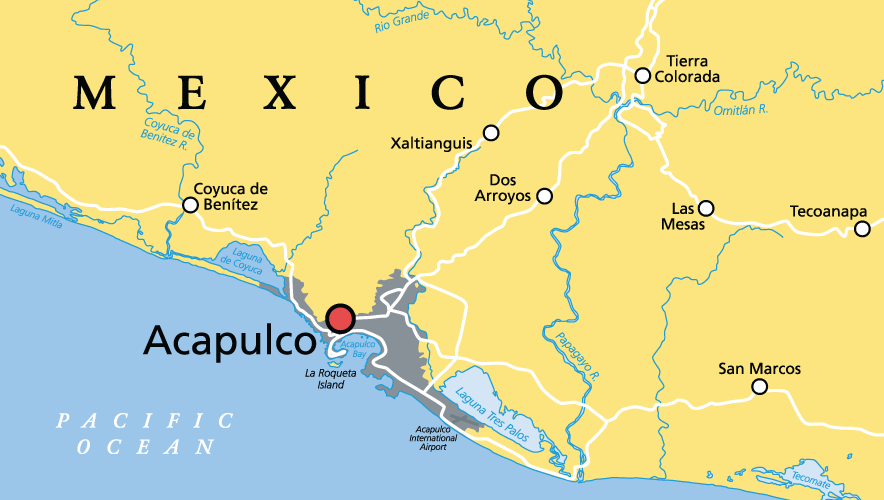Hurricane Otis Hits Mexico After Historic Rapid Intensification
Hurricane Otis made landfall along the Pacific Coast of Mexico on Wednesday, 25 October 2023.
Although Otis was rated as a tropical storm on Tuesday, within 12 hours it intensified into a Category 5. Its heavy rain and high winds have centered on the popular tourist destination of Acapulco and the surrounding communities.
In what the National Hurricane Center (NHC) described as a “nightmare scenario” for southern Mexico, Otis “explosively intensified” as it approached the nation’s western coastline.
The hurricane’s rapid escalation caught many residents in the state of Guerrero and authorities off guard, as the storm was initially expected to remain at the level of a tropical storm or a Category 1 hurricane. “There are no hurricanes on record even close to this intensity for this part of Mexico,” the NHC noted. This region of the nation had previously never experienced a major hurricane (Category 3 or greater) prior to Otis, according to AccuWeather.
On Tuesday, Acapulco’s mayor advised residents to either find safety at home or hunker down in one of the city’s two dozen shelters. The city is home to almost 1 million people and is nestled between the ocean and steep mountains.
“The center of Otis is expected to move farther inland over southern Mexico through Wednesday night,” according to the Associated Press.
Since making landfall, Otis has weakened to a Category 2 hurricane, with sustained windspeeds of roughly 110 miles per hour.
The latest advisory from the NHC warned that Otis is expected to produce a total additional rainfall of 4 to 6 inches through Thursday across the state, and into the western coast of the neighboring state of Oaxaca. “This rainfall will produce flash and urban flooding, along with mudslides in areas of higher terrain,” the report said.
⚠️ Se reportan cortes de energía eléctrica en Guerrero, debido a las afectaciones del #Huracán #Otis. Ante esta situación, guarda la calma y resguardate en un lugar seguro hasta que las autoridades informen que el peligro terminó.
— Coordinación Nacional de Protección Civil (@CNPC_MX) October 25, 2023
👉 Aléjate de ventanas para evitar lesiones si… pic.twitter.com/RqVmLMJD43
Further inland, Otis delivered heavy rains and triggered flash floods. Authorities reported that parts of the state were already experiencing power cuts by Wednesday morning, according to CBS News. “The agency urged people to stay away from windows, disconnect electrical devices, avoid contact with water and metallic objects, and to follow updates from official sources,” CBS News reported.
“Studies have established a clear link between climate change, with warming seas and air temperatures, and more frequent and severe bouts of rapid intensification in hurricanes,” Axios reported. As the world and its waters become warmer, the number of rapidly intensifying tropical cyclones is increasing.
A scientific study published on 19 October noted that tropical cyclones occurring along Atlantic coastlines between 2001 and 2020 have shown an increase of more than 28 percent in quick intensification rates compared to those between 1971 and 1990. The fastest rates are often seen in storms occurring in “areas of unusually warm upper ocean and sea surface temperatures,” according to the study, published in Scientific Reports. That warmth acts as fuel for hurricanes. “Many of the most damaging (tropical cyclones) to impact the U.S. in recent years have been notable for the speed at which they have intensified,” the study said.












